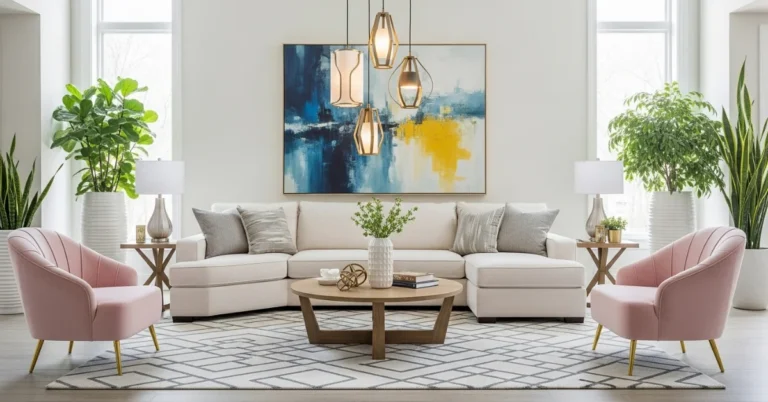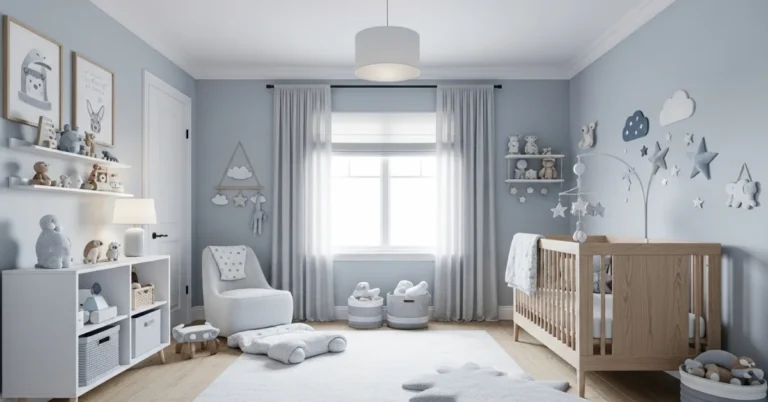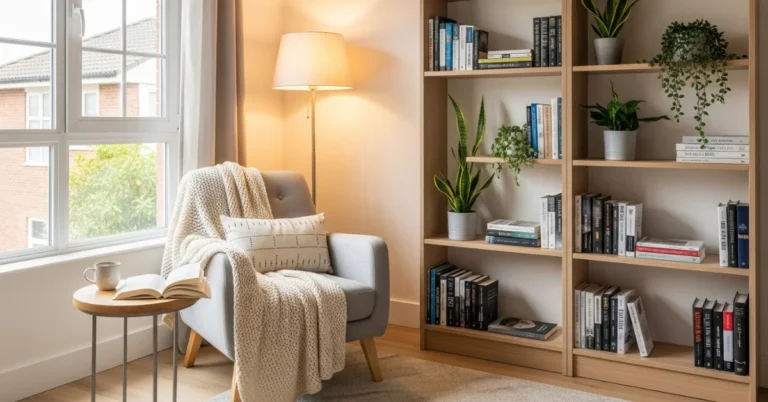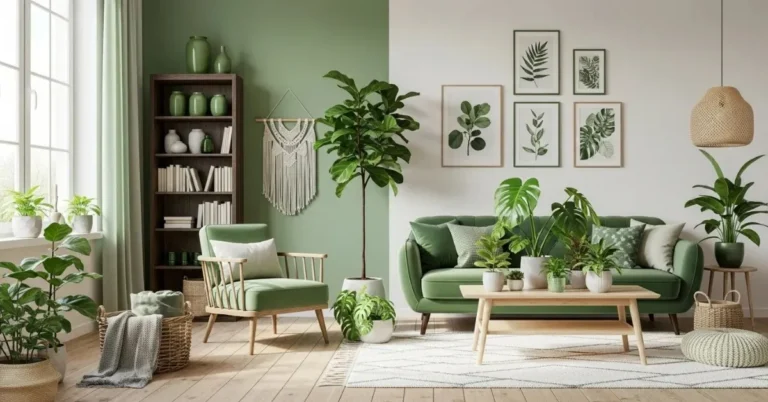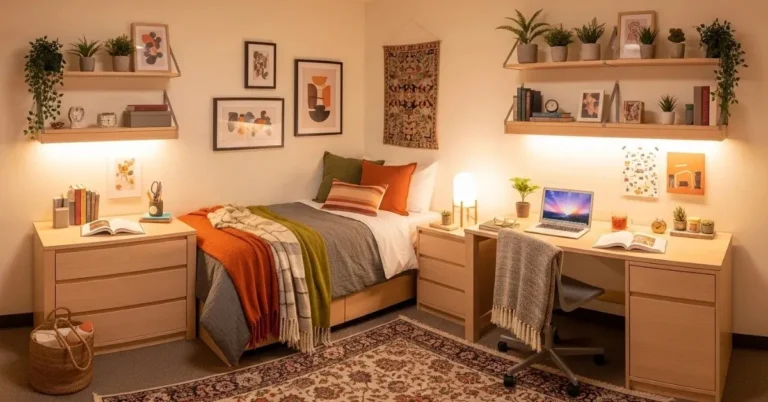15 Studio Apartment Ideas That Solve Common Decorating Problems in 2026
Studio apartment ideas for 2026 are all about making every square foot count without breaking the bank. If you’re tired of living in a cramped space that feels more like a closet than a home, you’re not alone. Whether you’re a college student in New York City or a young professional in San Francisco, these fresh design tricks will help you create a space that actually feels like home—not just a place to sleep.
1. Use a Murphy Bed to Reclaim Floor Space
Sarah from Boston transformed her 350-square-foot studio by installing a Murphy bed last year. During the day, her bedroom becomes a yoga studio and home office. At night, she pulls down the bed in seconds. This classic space-saving solution has made a comeback in 2026, with modern designs featuring built-in shelving and USB ports.

Murphy beds now come with soft-close mechanisms and can hold up to 300 pounds. Companies like IKEA and Wayfair offer models starting at $800. The best part? You’ll gain about 25 square feet of usable space during waking hours, which is huge in a studio apartment.
2. Install Floating Shelves Instead of Bulky Bookcases
Marcus, a graphic designer in Seattle, removed his old bookcase and installed floating shelves along three walls. He gained 18 inches of walking space and his studio suddenly felt twice as big. Floating shelves draw the eye upward, making low ceilings appear higher while providing tons of storage.

These shelves work perfectly for books, plants, and decorative items. You can buy them at Home Depot or Target for $15-40 each. Install them in a staggered pattern or in straight lines above your desk, bed, or kitchen area. They’re easy to mount and don’t eat up precious floor space like traditional furniture.
3. Choose a Sofa Bed Instead of a Regular Couch
Emily in Chicago hosts friends every weekend thanks to her convertible sofa bed. By day, it’s a comfortable three-seater couch. By night, it transforms into a queen-size bed for guests. This dual-purpose furniture is perfect for studio living where every piece must work overtime.
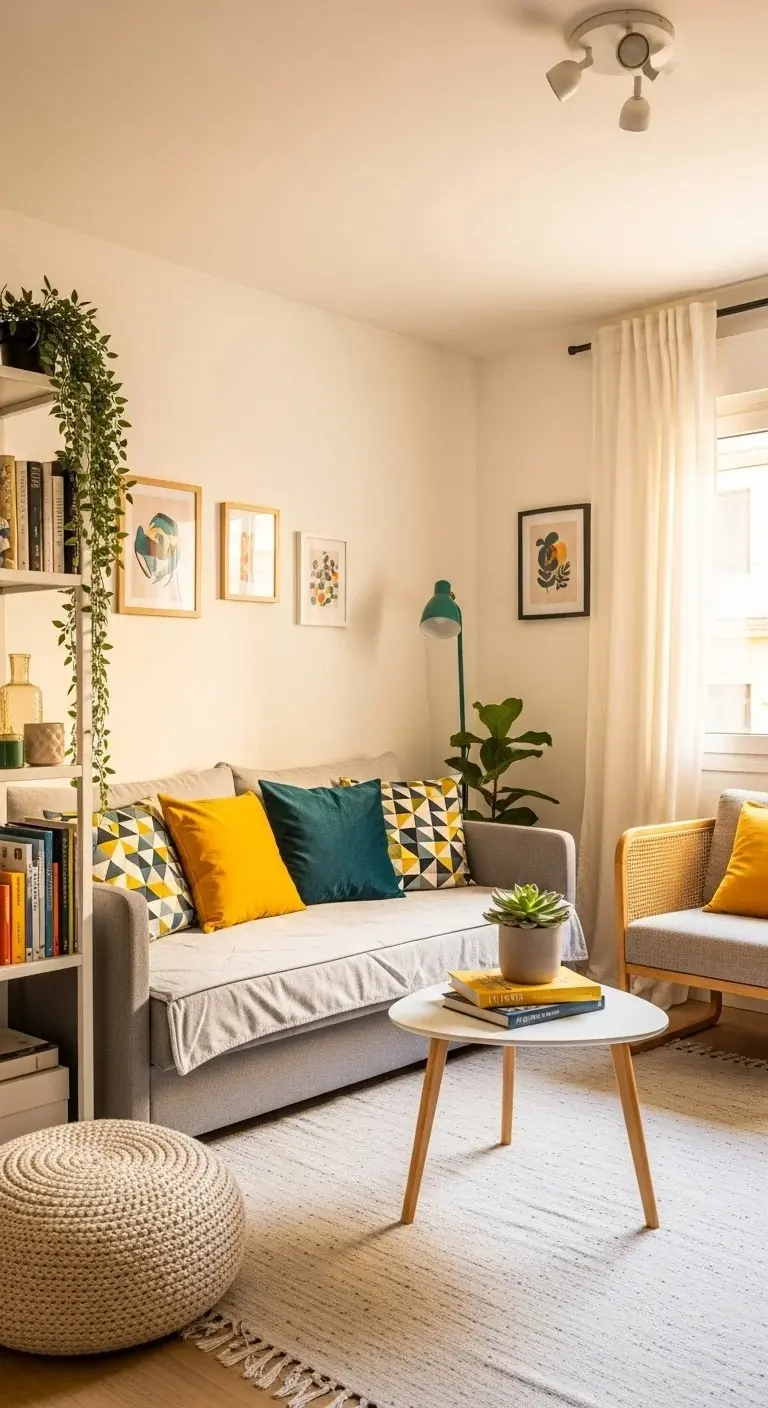
Modern sofa beds have come a long way from those uncomfortable contraptions your grandparents owned. Brands like West Elm and CB2 offer stylish options with memory foam mattresses. Expect to spend $600-1500, but you’ll save money by not needing both a couch and a guest bed. Plus, your friends will actually want to stay over.
4. Hang Curtains to Create Separate Zones
Jake in Los Angeles hung ceiling-mounted curtains to divide his sleeping area from his living space. This simple trick cost him $50 at Target and gave him the privacy he desperately needed. Curtains are cheaper and easier than building walls, and you can change them whenever you want a new look.

Choose light, flowing fabrics that won’t make your space feel smaller. White, cream, or light gray work best. You can pull them back during the day to keep things open, then close them at night. This creates a psychological boundary that helps your brain separate “sleep mode” from “work mode.”
5. Invest in a Fold-Down Desk
Rachel, a remote worker in Austin, mounted a fold-down desk on her wall near the window. When she’s done working, she folds it up and her studio instantly becomes a living room again. This prevents that cluttered feeling where your workspace takes over your entire home.

These desks range from $100-400 and can support laptops, monitors, and office supplies. Mount one at the right height (about 29 inches from the floor) and you’ll have a proper workspace without sacrificing permanent floor space. Some models include built-in storage for pens, papers, and charging cables.
6. Use Mirrors to Make Your Space Feel Bigger
David in Miami placed a large mirror opposite his only window, and suddenly his dark studio was filled with natural light. Mirrors create the illusion of more space by reflecting light and views. Interior designers have used this trick for decades because it actually works.

A full-length mirror costs $30-150 at stores like IKEA or Amazon. Position it across from windows or light sources for maximum impact. You can also use multiple smaller mirrors arranged in a gallery wall. This doubles the visual space and makes your studio feel less like a cave.
7. Get a Rolling Kitchen Island
Lisa in Portland bought a rolling kitchen cart for $200 and it changed her cooking game completely. She uses the top for meal prep, stores pots in the cabinet below, and rolls it aside when she needs more floor space. This mobile solution beats permanent kitchen islands that eat up precious square footage.

Look for models with locking wheels, butcher block tops, and multiple shelves. Target, Amazon, and IKEA carry great options. You’ll gain extra counter space (something most studios severely lack) and storage for dishes, utensils, and small appliances. Plus, you can wheel it to different spots depending on what you’re doing.
8. Install a Pegboard Wall for Vertical Storage
Tom in Brooklyn mounted a pegboard in his entryway and now his keys, bags, and jackets have a home. This simple organization system keeps clutter off the floor and makes everything easy to find. Pegboards cost about $20-40 and can be painted any color to match your style.

Add hooks, baskets, and small shelves to customize your setup. Use it in the kitchen for pots and pans, in the bedroom for jewelry and accessories, or near your desk for office supplies. The vertical storage saves floor space while keeping daily items within reach. It’s like having a closet that hangs on your wall.
9. Choose Furniture with Built-in Storage
Nina in Denver bought an ottoman that opens up to store blankets, a bed frame with drawers underneath, and a coffee table with hidden compartments. These multipurpose pieces eliminated her need for a separate storage unit, saving her $100 per month in rental fees.

Storage furniture costs slightly more upfront but pays off quickly in small spaces. Look for beds with 4-6 drawers, benches that lift up, and coffee tables with shelves. IKEA’s MALM bed frame, for example, has four large drawers and costs around $400. You’ll have places to put everything without adding bulky dressers or cabinets.
10. Hang Your Bike on the Wall
Carlos in San Diego freed up 10 square feet by hanging his bicycle on the wall using a $30 rack from REI. His bike became functional art instead of a floor obstacle. Wall-mounted bike racks work for studios because they utilize vertical space that usually goes to waste.

Install the rack at least 5-6 feet high so you can walk underneath comfortably. Many racks hold up to 50 pounds and take just 20 minutes to install. This trick works for other items too—guitars, surfboards, or skateboards. Anything you can hang is one less thing cluttering your limited floor space.
11. Use Under-Bed Storage Boxes
Amanda in Nashville stores her winter clothes, extra bedding, and shoes in plastic bins under her bed. She slides them out twice a year to swap seasonal items. This hidden storage keeps things organized and out of sight without requiring extra furniture.

Buy wheeled storage containers for easy access, or use vacuum-sealed bags to compress bulky items. The Container Store and Amazon sell options for $10-40 each. If your bed frame doesn’t have built-in storage, add bed risers to create 6-8 inches of clearance underneath. You can store several large bins in this “dead space.”
12. Install a Shower Caddy and Bathroom Organizers
Kevin in Philadelphia maximized his tiny bathroom with a tension rod shower caddy and over-the-door organizers. These cost less than $50 total and gave him places for toiletries, towels, and cleaning supplies. Small bathrooms need creative solutions since there’s rarely room for cabinets or shelving units.

Tension rod caddies don’t require drilling and can hold shampoo, soap, and razors at eye level. Over-the-door hooks and pockets work for towels, hair tools, and extra toilet paper. Magnetic strips mounted inside cabinet doors can hold tweezers, nail clippers, and bobby pins. Every vertical inch counts in a studio bathroom.
13. Create a Gallery Wall Instead of Floor Art
Sophia in Washington DC turned one wall into a gallery featuring photos from her travels, postcards from friends, and small prints. This personal touch makes her studio feel like home without taking up any floor or surface space. Gallery walls add personality and visual interest to bland rental walls.

Start with 6-10 frames in different sizes from Target or Michaels (expect to spend $50-100 total). Arrange them on the floor first to plan your layout, then hang them using removable picture hooks. This protects your security deposit while creating a focal point. You can swap out photos anytime you want a fresh look.
14. Get a Bar Cart for Extra Kitchen and Living Space
Maya in Nashville uses her bar cart as a coffee station in the morning and a drink cart when friends visit. This $80 piece from Target serves multiple purposes and rolls wherever she needs it. Bar carts add style and function without the footprint of permanent furniture.

Stock the top shelf with mugs, coffee, and tea. Use the middle shelf for glasses and bottles. The bottom can hold napkins, coasters, and snacks. Some people use bar carts as nightstands, plant stands, or bathroom storage. The wheels make them incredibly versatile for studio living where flexibility matters.
15. Add Plants on Wall-Mounted Holders
James in San Francisco hung planters on his walls and suddenly his studio felt alive and fresh. Plants improve air quality, reduce stress, and make small spaces feel more inviting. Wall-mounted planters keep greenery off your limited counter and floor space.

Choose low-maintenance plants like pothos, snake plants, or succulents if you’re not a gardening expert. Wall planters cost $15-30 each at nurseries or Home Depot. Hang them near windows for natural light. Even in a 300-square-foot studio, you can have 5-10 plants without making things feel cramped. The vertical garden trend is huge in 2026.
Why Studio Apartments Are More Popular Than Ever
Studio apartments have exploded in popularity across major cities worldwide. According to recent housing data, studio rentals increased by 23% in urban areas between 2023 and 2025. Cities like New York, San Francisco, and London saw the biggest jumps as young professionals choose convenient locations over extra square footage.
The average studio apartment in the US now costs $1,450 per month, which is $400-600 less than a one-bedroom in the same neighborhood. Renters save money that can go toward student loans, travel, or savings. With remote work becoming permanent for many companies, people prioritize living in walkable neighborhoods with good coffee shops and restaurants over having a second bedroom they rarely use.
Key Statistics About Studio Living in 2026:
- 42% of studio renters are between ages 22-32
- Average studio size has decreased from 550 sq ft to 475 sq ft since 2020
- 67% of studio dwellers live alone
- Studio apartments typically cost 30-40% less than one-bedroom units
- 58% of studio renters stay in their apartments for 2+ years
Common Mistakes People Make When Decorating Studios
First-time studio renters often buy too much furniture in the first week. Megan in Philadelphia bought a king-size bed, full sectional couch, and large dining table before measuring her space. She ended up returning everything and starting over with smaller pieces. The biggest mistake is not planning your layout before shopping.
Another common error is using dark colors that make small spaces feel even smaller. Paint companies report that 78% of studio renters who use dark wall colors end up repainting within six months. Light neutrals—whites, creams, soft grays—reflect more light and create the illusion of more space. Save dark colors for small accent pieces like throw pillows or artwork that add personality without overwhelming the room.
Smart Shopping Tips for Studio Furniture
Buy multipurpose furniture that serves at least two functions in your studio apartment. IKEA reports that their convertible furniture sales jumped 34% in 2025 as more people embrace small-space living. A bench that provides seating and storage beats a regular chair every time. An extendable dining table that seats two daily but expands to six for dinner parties is worth the extra $100.
Measure everything twice before buying and always check return policies. Retailers like Wayfair and Amazon offer free returns on most furniture, which helps when something doesn’t fit quite right. Use painter’s tape on your floor to mark furniture dimensions before delivery. This simple trick prevents expensive mistakes and multiple trips up the stairs.
Conclusion
Studio apartment ideas for 2026 focus on smart storage, multipurpose furniture, and creative use of vertical space. By implementing even 5-7 of these 15 ideas, you can transform a cramped studio into a comfortable home that reflects your personality. Remember that small space living is about making intentional choices—every piece of furniture should earn its place. Start with one or two changes this weekend, and you’ll be amazed at how much better your studio feels. Your small space doesn’t have to feel small anymore.
FAQs
How can I make my studio apartment look bigger?
Use mirrors to reflect light, choose light paint colors, install floating shelves instead of floor furniture, and hang curtains high near the ceiling. Keep clutter minimal and let natural light flow freely through your space.
What’s the most important furniture for a studio apartment?
A good sofa bed or Murphy bed is essential because it serves double duty. After that, invest in furniture with built-in storage like ottoman beds or coffee tables with compartments to maximize your limited space.
How much does it cost to furnish a studio apartment in 2026?
You can furnish a basic studio for $1,500-3,000 by shopping at IKEA, Target, and Facebook Marketplace. Focus on essential multipurpose pieces first, then add decorative items over time as your budget allows.
Can I have a separate bedroom in a studio apartment?
Not a true separate room, but you can create bedroom zones using curtain dividers, bookcases, or folding screens. These visual barriers provide privacy and help your brain separate sleeping space from living areas without permanent walls.


